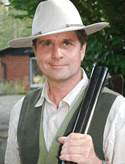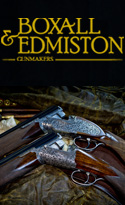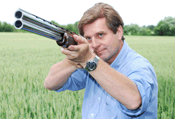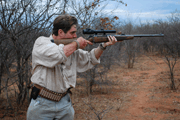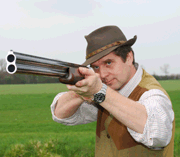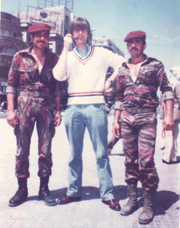Don't Check Your Swing
The Marquis of Ripon, arguably the greatest game shot of all time, is only known to have given one piece of shooting advice in his long sporting life: “Don’t check.” From a man who dispatched 229,976 pheasants between 1867 and 1895 alone and half a million head of game before his death in 1923, this must be worthy of some note.
Stopping the gun is certainly one of the greatest of shooting sins. We all do it on occasion. Nevertheless, to shoot well you must keep the gun moving. You must shoot in a flowing, fluent manner. You must develop a smooth but powerful swing. You need to ‘brush’ every bird out of the sky with a good rhythmic movement.
I often observe when teaching rifle shots to shoot a smoothbore at moving targets how difficult they find shotgun technique initially. They are used to keeping a gun still after squeezing the trigger, they find it very difficult to push on with the gun after pulling the trigger (yet, rifle shots when they acquire the new techniques required of shotgunnery – and it may take some considerable time and good instruction – can become very good game shots).
There are other reasons why the rest of us tend to stop the gun prematurely. One follows on from what has just been stated. It is a great mistake to be too deliberate with a shotgun once one is committed to the shot. I often see people coming to the bird, moving in front and then deliberating on the lead picture. They nearly always miss. So, Rule No.1 is DON’T BE TOO DELIBERATE – TRUST YOURSELF.
Continuing with our catalogue of sins. Many rush at their birds only to stop prematurely. Typically, they see a bird, subconsciously panic, rush the gun infront of it at light speed only to come to a dead stop when the trigger is pulled. Result? A miss behind, of course. Rule No.2 therefore – the positive version of Ripon’sadvice – is KEEP THE GUN MOVING ONCE YOU HAVE PULLED THE TRIGGER. You must always follow through, finishing the shot well.
It is also important that your weight is properly distributed. You should have your front shoulder over your front foot when the gun is mounted. If you have a tendency to bring the weight back – and some start in a poor position whislt others tend to bring the weight back during the swing – the gun will tend to slow and rise. Result? A miss behind and above. So, Rule No. 3 is KEEP THE WEIGHT FORWARD (and the head down) TO PROMOTE GOOD GUN MOVEMENT.
You should not have an exagerated forward lean, you should be in a relaxed stance with the weight predominantly on the front foot. Your front shoulder, front hip and the ball of the front foot should all be in a straight line. Your back should be realtively straight. Your body should be relaxed.
As well as considering your centre of gravity, you need to think about your foot position and the orientation of your stance relative to the point where you intend killing the bird. Many stop the gun because they are standing in the wrong position and simply run out of swing as a result. All of us may be taken unawares on occasion, but, whenever possible, step into the line of the bird so that you can shoot the bird with a minimum of body tension. Rule 4 , therefore is CONSIDER YOUR FOOT POSITION AND MOVE THE FEET WHEN POSSIBLE
As noted, we may sometimes be surprised by a bird to one side or another, there may not always be time to move the feet into an ideal firing position (mine has the rear foot at 90 degrees to the point where I want to shoot the bird). When this happens good upper body movement becomes even more essential. On a crossing shot one must move the upper body like a tank turrent. On a high bird one must bend the back whilst controlling the muzzles well.
Many of us use far too much hand movement in the swing (often a cause of rushing to a stop). The upper body should be the powerhouse for the swing. By using it well you will make stopping much less likely. Those who learn to do this, however, will appear to shoot much more smoothly and they will appear to be in far more control. They don’t need to rush.
Don’t think, though, that you must not use the hands and arms at all. Their role is vital. They lift the gun and control the muzzles. To do this efficiently they must be in the right position. Rule 5 there is DON’T EXTEND THE FRONT HAND TOO FAR FORWARD.


